Achchan Maharaj
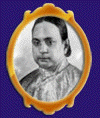
Bindadin Maharaj
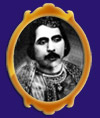
Birju Maharaj
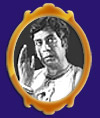
He is not only an accomplished dancer of the first order and brought a revolution in Kathak by composing new types of Tukras, Parana, ballets and other compositions, and bringing novelty in presentation, but also an expert Thumii singer, a Pakhawaj, Tabla and Nus player.
He had settled down at New Delhi. He accepted a job as a dance teacher at Sangit Bharati at New Delhi. He composed ballets, like Phag Lila, Kumar Samabhavam, Govardhan Lila, Malati Madhav, Shan-E-Awadh etc with his uncle, which were highly appreciated by the public. He is a master of both Nritya and Nritta, and is quite adept in practically demonstrating them. He had traveled extensively and has presented his art with great success, Any music conference of all-India level seems lonely without the talented Birju Maharaj. At present he is a teacher at the Kathak Kendra of New Delhi. He is now the torch-bearer of the Kalika-Bindadin Gharana. He is very social and simple in habits. He holds the view that Kathak dance has deep-rooted relationship with human life and there are individual and special characteristic features of Bhava, Gat, Laya, Tala, and Ahhinaya in this art. Accordingly, he endeavors to make a harmonical synchronization of them.
He composed the music and also lend his voice for two dance sequences in the film ‘Shatranj Ke Khiladi’, directed by Satyajit Ray. He also gave music in the films such as Devdas (2002), Gadar (2001), and Dil To Pagal Hai (1997).
This accomplished dancer, singer,musician won many awards including Padma Vibhushan (1986), Sangeet Natak Akademi award, Kalidas Samman and the Lata Mangeshkar Puraskar in 2002. This torchbearer of Lucknow Gharana has been conferred the honorary Doctorate degrees by the Banaras Hindu University and the Khairagarh University.
Chiranji Lal
Chiranji Lal was the second son of Hanuman Prasad of Jaipur. He was trained in the technique of Kathak of Jaipur Ghaiana by his father at Jaipur and later on by Bindadin Mahaiaj at Lucknow. He worked for some time in the states of Udaipur and Raigarh, and stayed for long at Delhi teaching Kathak at the Gandharva Mahavidyalaya. On the death of his younger brother he began to give training in Kathak to the four sons of his brother.
Damayanti Joshi
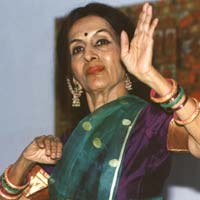
She has also given commendable performances before their Majesties of Afghanistan, Nepal, Bhutan, Spain etc. She started her dancing career in All-India Music Conferences. She made mark for her Tala aspect, and also in Nritya, and was acknowledged as the best exhibitor of the Ashta Nayikas, which came to be known as a solo ballet. She studied and choreographed the sculptures at Khajuraho for her solo ballet on the SURASUNDARI in Kathak technique. She also choreographed Dhrupad, Khayal, Thumris, Trivat, Taraua and Chaturang in Kathak, and was the first Kathak dancer to do it. At a tender age Damayanti travelled along with Menaka all over India, South East Asian countries, including Burma, Malaya, Singapore etc. throughout undivided India, Sri Lanka etc. She had her early training from Sita Ram Prasad and later from Achchan Maharaj, Luchchu Maharaj and Shambhu Maharaj. In Jaipur Gharana she had training from Hira Lal. Besides Kathak she has also learnt the other three classical schools, viz, Bharat Natyam, Kathakali and Manipuri from the respective stalwarts, and performed them at many places. Her honors among many, include Sangeet Natak Akademi, New Delhi’s Award for Kathak (1968), Padmashree (1970), titles such as Nritya Bhushan, Nritya Sharada, Nritya Vilas etc. Photo and account in Encyclopedia Brittanica (Latest Edition). She is mainly featured in the documentary on Kathak in 1973 by film division, Govt of India and another film entitled Damayanti Joshi in 1974. In the early morning hours of Sunday, September 19, 2004, Damayanti Joshi, breathed her last.
Gauri Shankar
Gauri Shankar hailed from Bikaner. He had his early training from his father and uncle, Devi Lal and Shiv Lai respectively. He also took lessons from Sunder Prasad. He earned fame after giving his dexterous performance at the Allahabad University All-India Music Conference in 1934, and since then entered in the profession of dancing. He joined Madame Menaks’s party in 1936 and performed at the International Dance Olympiad at Berlin, touting the whole of Europe with her. He was awarded one of the highest prizes at the Olympiad. On the return of the party to India in 1938, Gauri Shankar left the troupe and joined the Shanti Niketan at Bolepur, working with Rabindranath Tagore. He left Shantiniketan after a short while and toured the country on his own giving numerous dance performances. He joined Menaka again in 1942 and remained with her for about a year, when the party was disbanded. Gauri Shankar then opened his school at Bombay, known as Pracheen Nritya Niketan. He trained hundreds of pupils and composed certain ballets in Kathak technique
Gopi Krishna
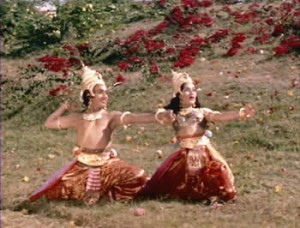
Although he started dancing naturally from the age of four, the training began under his maternal grandfather in Calcutta at the age of 11. Panditji was not only his mentor but also his guiding spirit. Gopi Krishna’s training under the great master therefore meant strict discipline and arduous practice for seven to eight hours a day. He also took training from Shambhu Maharaj, and does not believe blindly following any tradition,
Gopi Krishna also learnt Bharat Natyam from Guru Mahalingam Pillai and Govind Raj Pillai from the school of Sri Raj Rajeshwari Bharat Natya Kala Mandir. His main interest is in the use of classical dancing in Indian films. His first film success came with “Jhanak Jhanak Payal Baje”, a full length film by V. Shantaram. Gopi Krishna was only 17 then, but his role in the celebrated film gave to classical dancing a new status and new dimension. The film was a landmark in the history of India’s dancing and cinema, for it showed how classical dancing when properly used by film makers, would yield rich dividends. The film brought him fame all over the country. At 32, was the recipient of many distinctions and honors. He was awarded the titles of Natraj at the age of 15 at All-Bengal Music Conference, and in 1966 the Prayag Sangit Samiti Allahabad, honored him with the distinction of Nritya Samra.
He toured East Africa and Western countries. He has been directing dances for the films, besides his own performances in them. His dance direction carries a unique, individualistic touch. Equally significant is his contribution in the field of choreography. He has composed a number of solo dance ballets. He is first to divide the continuous Kathak style repertoire into distinctive items, which practice is now followed by other exponents of Kathak.
He gives a brilliant demonstration of the same rhythm in three percussion instruments, namely, Tabla, Pakhawaj and Chanda.
Hazari Lal
Hazari Lal of Bikaner, was a famous dancer of Jaipur Gharana. His father, Hanumantram, was a reputed Sarangi player, and his brother, Satya Narian, was a renowned Tabla player. Hazaii Lal received his training from both of them, viz , his father and brother, and thereafter became the disciple of Shiv Lal, a great exponent of Jaipur Gharana of Kathak. He also had intensive training from Sundar Prasad, and earned fame within a short period of time. As a result, he was invited to perform at the royal Darbars of many states including Raigarh, Gridhar and Puruna. He was a teacher for three years at Bhathkhande Sangit Vidyapith, Lucknow and also a chief Kathak dance teacher at Meerut Sangeet Samaj College.
Jagannath Prasad
Resident of Bikaner State, Jagannath Prasad received his training in Kathak dance for a long time from Chunni Lal and Gopal of Janki Prasad Gharana and also for some time from Nathu Lal of Gwalior Darbar. Jaganath Prasad spent a long time at Benaras, and was also in the courts of Nepal and Indore. He was a very religious man and his expositions brilliantly expressed the devotional aspect towards Lord Krishna. He composed a number of Kavitas and certain Angas of dancing. He died in 1946 at the age of 64. His son Radha Krishna is a dance teacher at Pilani Birla College.
Jai Kunwari
Jai Kunwari was the daughter of Jai Jai, the pillar of Jaipur Gharana. She was trained in the art by her father, and for a number of years she was second to none in the field of Kathak. Her forte was pure Nritta, and she was extremely proficient in Laya-kari. She was acclaimed everywhere she performed, specially in the music conferences of the country. The death of her father was a great shock to her and since then she gradually left the dance field. For a few years she was in the staff of the Beni Vidya Bithi, Calcutta as a dance-teacher. She died in 1973.
Jai Lal
Jai Lal Misra (1885-1949), the doyen of Jaipur Gharana, was first appointed as court dancer of Jaipur state, followed by Jodhpur, Ramgarh, Sikri and Maihar. He was for some time in the court of Nepal as well. He stayed at Raigarh for about eight years, and taught Kartik and Kalyan. Besides a talented expert of Kathak dance, he was also proficient musician and an acknowledged, experienced and qualified Tabla and Pakhawaj player, He got his training from his father Chuni Lal and uncle Durga Prasad. He spent the last three years of his life as a Kathak dance and teacher teacher at Calcutta in Bani Vidya Bithi. His son Ram Gopal stepped into his shoes after his death in the same school and turned out many promising pupils. Ram Gopal died in 1979. Tai Lal’s daughter Jai Kunwari also became famous as a Kathak dancer of Jaipur Gharana. Ram Gopal and Jai Kunwari were from different mothers.
Jhande Khan
Jhande Khan, being the son of the famous vocalist Naththu Khan, was brought up in the musical atmosphere from his childhood. After eighteen years of strenuous training in vocal music, he was appointed as a court musician at Rampur, at the age of 23. At that time Hamid AH Khan was the Nawab of Rampur. At that time Bindadin and Kalika Prasad came to the Rampur Darbar and gave their performance. The entire Darbar was spell bound on witnessing their performance. These two brothers also attracted the young vocalist of about 30 by his superb performance. Jhande Khan bacame their disciple and learnt from them for eleven years the art of Kathak dance. In this way, he became well versed both in vocal music and Kathak dance. He was also appointed court dancer of Nepal, in the court of Rana Birchandra Shamsher and remained there for about six years. There he was highly honored and his services were regarded commendable by the Rana.
Kalika Prasad

Kartik Ram and Kalyan Das
These two dancers cannot be separated and their lives should be studied jointly. They were brought up and encouraged by the Raja of Raigrah, who made arrangements for teaching them music, and went so far as to appoint the two Kathak dance wizards, Achchan Maharaj and Jai Lal to train them up in dancing. When the Raja was living, these two dancers were in great form and there were very few dancers, even among the hereditary professionals, who could compete with them, at least in Tayyari. Both of them virtually retired from the field of dancing after the death of their patron – the Raja. They are still living in Raigarh.
Krishan Kumar
Krishan Kumar is the foremost representative of Janki Das Gharana. He is the son of Pt, Gopal and nephew of Hanuman Prasad, both outstanding dancers of their school. He was trained by Hanuman Prasad and Ashiq Hussain. He opened a school at Bareilly in 1947, and in addition to his duties and responsibilities as a teacher, he toured several parts of India giving performances of Kathak. In 1958 he came to Delhi to work in the ballet Maloti Madhav, produced by Bharatiya Kala Kendra. Here he came in contact with Shambhu Maharaj and started taking training from him of Lucknow Gharana. Accordingly, Krishan Kumar received a scholarship for the purpose from the Ministry of Culture. He is very amiable in nature and has occupied a stable position among the accomplished dancers of the present day.
Kundan Lal
Kudan Lal, an exponent of the Jaipur Gharana of Kathak was trained by his uncle, the noted representative of the same Gharana of Narayan Prasad. Kundan Lal accompanied Narain Prasad at Raigarh. After this he toured Bihar and Madhya Pradesh for five years, and gave performances wherever he went. Thereafter he remained at Bombay for 15 years and use to teach dancing there. He had film artistes also as his disciples among whom special mention should be made of Paro, Swarnalata and Javeen. He was the Kathak instructor in the Dance Department of Baroda University from 1923.
Luchchu Maharaj
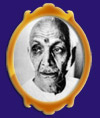
Maya Rao

Mohan Lal
Mohan Lal was the son of Hanuman Prasad of Jaipur and was the eldest among the three brothers, the other two being Chiranji Lal and Narayan Prasad. He learnt the Jaipur technique from his father and went to Lucknow. He was a disciple of Bindadin Maharaj for some time. Thereafter he went on giving demonstrations at many places in the country, including Baroda, Raigarh, Indore, Gidhnaur etc., and then settled down at Jaipur as the court-dancer. He stayed for sometime at Bombay and then went to Delhi, where he stayed for a considerable length of time giving training to his disciples. From Delhi he again went to Khairagad, and started teaching Kathak at Sangit Vidyalaya.
Narayan Prasad
Narayan Prasad was born at Jaipur in 1908 in the famous Gharana of Hari Prasad-Hanuman Prasad. Narayan Prasad’s father was Hanuman Prasad and Hari Prasad was the elder brother of Hanuman Prasad. Hari Prasad was dance-teacher at the “Gunjan Khana” of Jaipur. Narayan Prasad’s training in Kathak dance began at the age of eight from his said uncle and father and from the age of twelve he started appearing before the public as a boy-dancer and a prodigy. Narayan Prasad’s two elder brothers, Mohan Lal and Chiranji Lal, were then engaged as teachers of Pakhawaj and singing of dance. Narayan Prasad became famous in a short time after successfully demonstrating his art in many music conferences. He was adept in “Shringar”, and was honoured with the title of “Nrityatharya.” by Gandharva Mahavidyalaya at Belgaum on 8th December 1958. He had about seven hundred students of caliber, many of whom earned wide reputation. After teaching for twelve years at Delhi he died there on 12th December 1958. Among his six children, Chand and Swraj are reputed dance-artistes.
Rani Karna
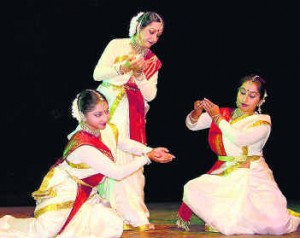
Roshan Kumari
Roshan Kumari, the daughter of the noted Tabla and Pakhawaj player Fakir Mohammad and famous play back singer Zohra Jan of Ambala, who was working in the films at Bombay for a long time. In this way, Roshan Kumari was brought up in a musical atmosphere. She had training in Kathak first from K.S. Moray and thereafter from Sundar Prasad. In order to understand the technique of the art of Bharat Natyam and not with an idea of giving Bharat Natyam programmes, she learnt the art from Govindraj Pillai of Bombay and Mahalingam Pilial. She has presented her performances with high approbation at numerous music conferences throughout the country, and has presented her art for important dignitaries, who have, from time to time come to India from various foreign countries. She is also a TV artist. She has also danced in a number of Hindi and Bengali films, including “Jhansi Ki Rani”, “Mirza Galib”, “Waris”, “Basant Bahar” and “Jalsaghar”.
Shambhu Maharaj
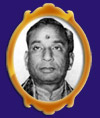
Shiv Lal
Shiv Lal was a life long devotee of Kathak of which he was a veteran. He originally hailed from Rajasthan but early in his life, after getting some training from Gurus there, went to Lucknow, where he was enlisted as one of the promising disciples by Bindadin Maharaj. He then served as a dancer in the states of Mysore and Nepal. He was a teacher of Kathak dance for some time at Gandharva Mahavidyalaya, Bombay. He then went back to his native place Sujangarh.
Sitara Devi
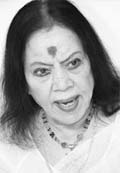
Sitaram Prasad
Sitaram Prasad was a disciple of Bindadin Maharaj and a contemporary of Achchan Maharaj. He served as a court dancer at Raigarh and also in Nepal. He came to Bombay in the year 1935 and settled there. He trained many artists there, among whom a few film stars also featured including Menaka, Zubeda and Manorama.
Sohan Lal
Sohal Lal was also an exponent of Jaipur Gharana like Jai Lal. He was the pupil of Jail Lal, Sunder Prasad and Devi Lal. Being trained by those stalwarts he became an accomplished artist and imparted dance lessons to a number of disciples at Bombay and Calcutta who earned great reputation. He was also adept in vocal music and Tabla. Among his well known disciples are Bela Arnak, Jharna Saha, Sunalim Den, Lila Desai and Ramdhan (a dance teacher at Ludhiana).
Sundar Lal
Sundar Lal of Sujangarh, Rajasthan, was the son of the famous Tabla player Satya Narain, and received his training from the great masters of Jaipur Gharana, such as Shiv Narain, Jagannath, Sunder Prasad, Hazari Lal, Gauri Shankar and others. His demonstrations were marked by polish, technical efficiency, ease, grace and charm. Besides being an eminent Kathak dancer, he was also an able teacher. He worked as a teacher at Bombay, Meerut and Delhi. He earned a name also as a Tabla player and used to give demonstrations from the All India Radio. He is also a composer and has a number of Kathak Kavita and Toras to his credit. He is working as a dance teacher in the Dance Department of the Baroda University.
Sundar Prasad

